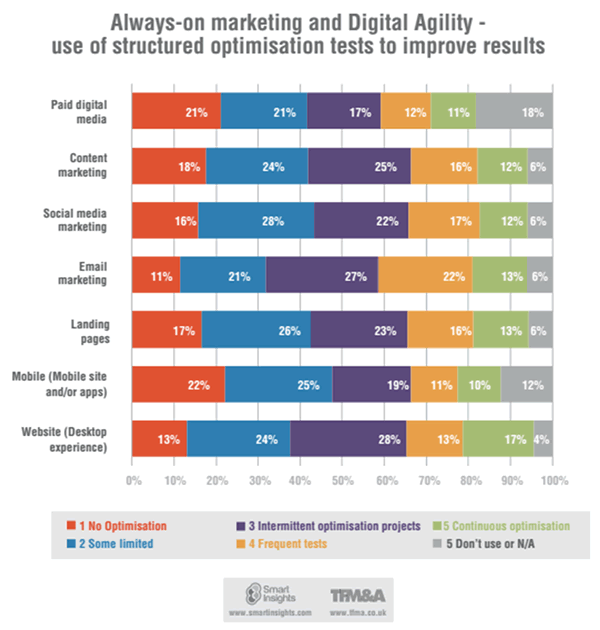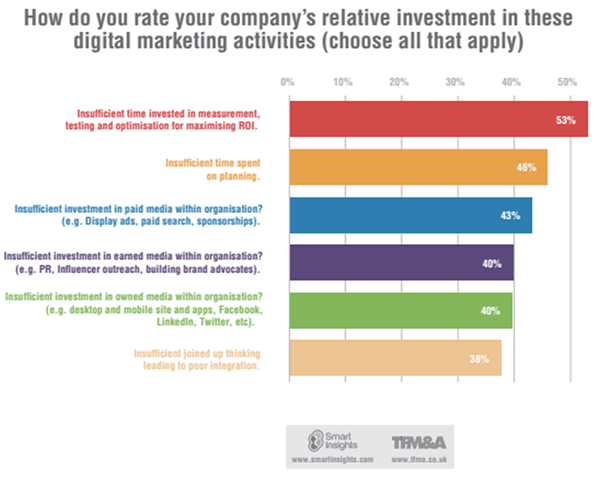
The opportunity to continually test and refine digital marketing is often cited as one of the main advantages of “new media” over “traditional media”. The conversation amongst digital marketing thought-leaders is generally sophisticated on this subject, advocating advanced tactics.
Terms such as “Agility”, “A/B testing” and “social media optimisation” are common currency. But what’s really happening on the ground? To what extent do marketers in the field actually optimise their digital efforts?
Managing Digital Marketing 2015, a new report by Smartinsights.com, offers some sobering answers.
We surveyed 765 of our members – marketers in companies of all sizes – asking them what tactics they use online, how they manage their campaigns, where they plan to invest this year and what the barriers are to success.
Around a quarter to a third, we discovered, continually optimise or run frequent tests on the channels they used. While a good start, this is still a small proportion, virtually unchanged since our survey the previous year.
10-20% never optimise at all, leaving the great majority optimising only sporadically, or in a limited fashion. The channel optimised most often is email (by 35%), followed by website and paid digital media (both 30%). By contrast, only 21% regularly optimise their mobile site and / or apps.
The full breakdown can be seen in the following chart:

Lack of management support the prime culprit
Why does optimisation remain so poor? The possibilities include lack of knowledge and / or skills, lack of time, and poor organisation, with marketers struggling to fit in these additional tasks around their regular campaign activity.
But the figures in our research suggest lack of management support as the prime culprit.
Asked to name areas where their company failed to invest sufficiently, a whopping 53% cited measurement, testing and optimisation – more than any other area:

The strong message is that marketers fully realise that testing and optimisation is a key to achieving ROI and want to spend more time optimising their digital marketing campaigns, but need support at management level.
The challenge, then, is for marketers to make the case for future investment in optimisation techniques.
Where to start?
What’s the best approach to take? If marketers can show that optimisation has made an appreciable difference to results in one small area of their programme, management is more likely to fund and support optimisation elsewhere as well.
Some simple tests that can have a huge impact, but are easy to administer, include:
- A/B testing subject lines on email
- Measuring whether the time of day in which you post updates on social media, or send out your email newsletter, affects the reception they receive
- Change the placement of the lead-magnet on your blog, to find out whether you get more conversions
- Shorten the sign-up form to your newsletter, to find out whether visitors are more likely to fill it in
- Experiment with other elements on your landing pages, to see whether changing the call-to-action, colours, headlines and so on affect sign-up rates.

Start simply – and most importantly, start testing an area with which you are familiar. As the saying goes, nothing succeeds like success!
Managing Digital Marketing 2015, produced with TFM&A, the UK’s largest and longest running Marketing event, explores approaches businesses use to plan and manage their investments in digital marketing.

